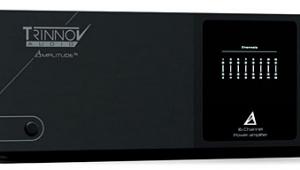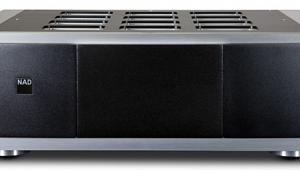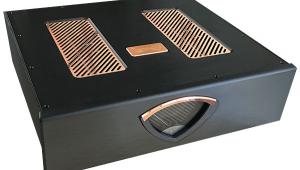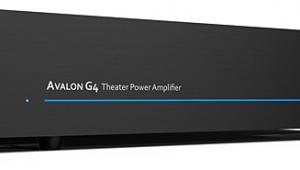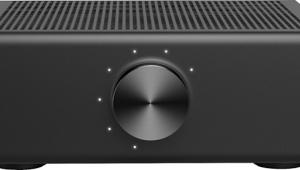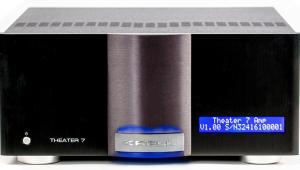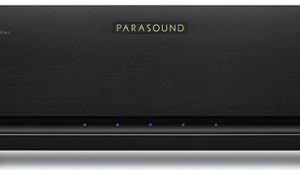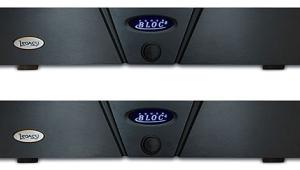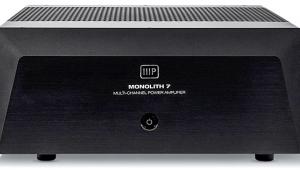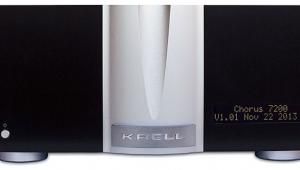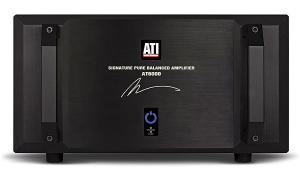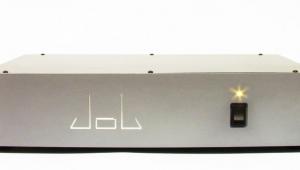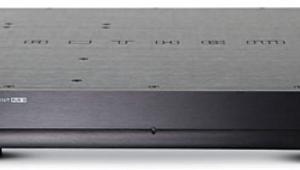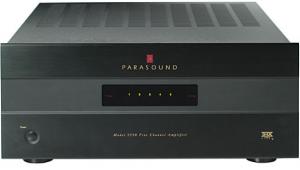Musical Fidelity M250 monoblock power amplifier Page 2
Although the long lengths of OCOS speaker cable running through my walls are supposed to minimize the effects of long cable runs, it wasn't until I put the amps next to the speakers and connected them using short lengths of cable that I really heard the benefits of such a configuration, and the true performance potential of the M250.
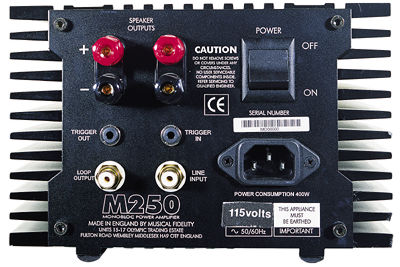
The degree to which the bass tightened up and the rhythmic confidence of the speakers improved was surprising, despite the fact that I already knew the M250's sonic potential from reviewing the Nu-Vista M3 for Stereophile. The three-speaker front picture focused, clarified, and took on a visceral authority I didn't think the relatively inexpensive B&Ws were capable of producing. I'll spare you excruciatingly detailed examples—the true potential of this powerful monoblock wasn't fully revealed until the big RBH Signature speaker system arrived.
With those large, floorstanding, 3-way monoliths, which are capable of truly deep bass and hefty power handling, the M250s had an opportunity to really demonstrate their mettle. The RBHs' silk-dome Vifa tweeters revealed the M250s' airy, grain-free high-frequency response and transient clarity, while the 12-inch woofers in the RBH 1266SEs produced deep, powerful, tight low bass when I configured the system for full-frequency response from the L/R channels. Cranked to almost dangerous SPLs, the system sounded as if it was just loafing—a testament to the amplifiers' power and stability as well as the speakers' power-handling capacity and enclosure integrity. If you want your home-theater system to really rock out, you can't go wrong with M250s all 'round.
Good as they are, neither of the receivers I used for the review—the Integra DTR 9.1 and the Pioneer VSX-49TX—could approach the sonic integrity and solidity produced by five M250s placed close to their respective speakers. I wasn't surprised. My reference 2-channel amplifier for the past few years has been a Musical Fidelity Nu-Vista 300, and nothing I've compared it to at any price has embarrassed the 300's sonic performance.
With the M250s and the B&K Reference 30 pre-pro in place, I listened to dozens of 2-channel and multichannel SACDs and about 20 movies before writing this review. The M250s never disappointed, delivering the kind of performance you should expect from 1250 high-quality, low-distortion watts. The receivers couldn't match the M250s' bass control, rhythmic swagger, transparency, and overall ease of presentation—and those qualities alone are worth the price of admission. The powerful M250s always sounded as if they were coasting along, unaffected by the loudest, deepest explosions or the most delicately drawn musical line.
On the continuum between “fast, etched, and excited" and “warm, rich, and enveloping," the M250s sat comfortably in the middle, delivering clean, well-defined transients without sounding antiseptic, bright, or hard. I heard midband richness and well-rounded bass textures free of cloying warmth, excess fat, or sluggish rhythmic development. The difference between any receiver's power-amp section and five 250W monoblocks could not be denied, even when all the monos were stacked in a pile and forced to drive long lengths of speaker cable. But with one M250 placed next to each of the five speakers and connected with a short length of cable, they were a force to be reckoned with.
Intrigued, I schlepped a pair down to my 2-channel listening room. While they didn't sound quite as rich, powerful, and authoritative as my Musical Fidelity Nu-Vista 300 reference 2-channel amplifier ($5500), they shared many of the 300's strongest traits: dynamic authority at both ends of the scale, impressive bass extension and control, and silky-smooth, grain-free top-end performance. You'll get more bloom, midband richness, and dimensionality from the far more expensive Nu-Vista 300 Reference, but for less than half the price, a pair of M250s can come remarkably close. Perhaps, in a multichannel home theater, the differences don't mean that much.
Back upstairs, the combination of the B&K Reference 30 ($2800) and five M250s ($6000) produced the best sound I've heard in my home-theater system. Good as some receivers sound, including B&K's own AVR307, none compared to this formidable combination. I only wish I could have this combination and the Aerial Acoustics speaker system (reviewed in the May 2000 Guide) in-house at the same time.
Conclusions
Musical Fidelity has made a habit of producing rugged, aesthetically pleasing, superb-sounding, affordable audiophile-grade electronics. The M250 continues that tradition. It's beautifully built, flexible, reliable, and it sounds superb in every way.
If you use your home theater exclusively for watching movies and you've got a good-sounding, high-powered receiver, spending $6000 on five channels of monoblock amplification may not be a wise investment. But if you're also using the system for music—especially multichannel SACD or DVD-Audio discs—you could make an enormous sonic leap just by replacing your receiver's L/R amplifiers with a pair of well-placed M250s. While having non-identical amplifiers is not ideal, the other channels could follow as your budget allowed.
- Log in or register to post comments
